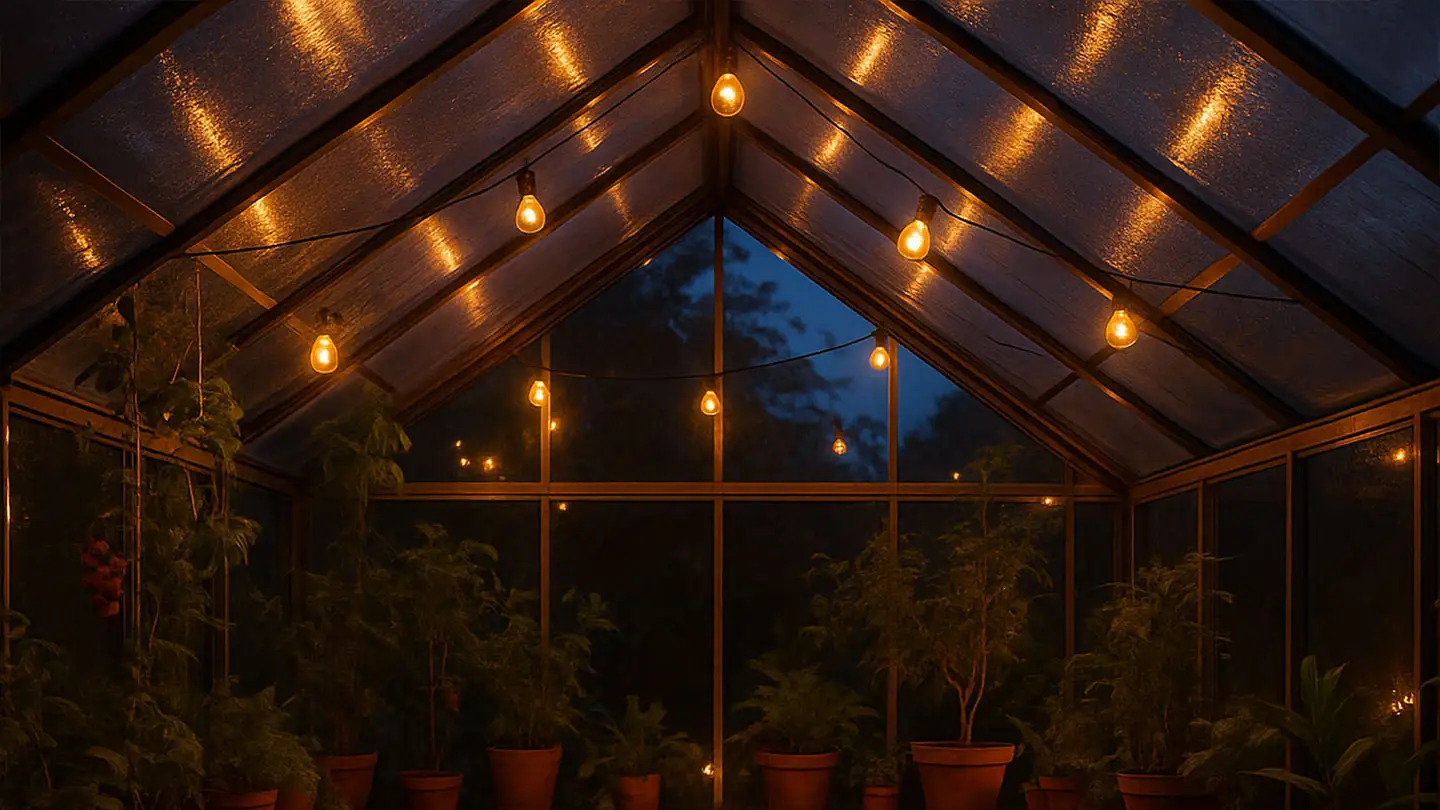
Greenhouse Lighting
When daylight fades, greenhouse lighting lets you extend growth and create a cozy atmosphere. Perfect for boosting plants or setting the mood in your orangery. We help you find efficient lighting that supports healthy plants and a relaxing space all year round.
 2-3 weeks
2-3 weeks How to Set Up Lighting in Your Greenhouse
Installing greenhouse lighting depends on your greenhouse size, frame type, crop layout, and power availability.
Mounting options:
- Overhead lighting: Ideal for general illumination across beds or benches
- Side-mounted strips or bars: Useful for vertical gardening or wall shelving
- Clip-on or hanging fixtures: Great for propagation areas or targeted lighting
Choose IP-rated waterproof fixtures designed for greenhouse use to avoid corrosion or short-circuits in humid conditions. If you’re using a grow tent or insulated section within the greenhouse, reflective materials like Mylar or white polyfilm can help increase light efficiency.
Power source: Most systems use standard 230V electricity. If your greenhouse is off-grid, solar-powered LED lights are a good option — especially for supplementary light during cloudy days or winter afternoons.
Smart controls: Use plug-in timers, Wi-Fi switches, or light sensors to automate your lighting and reduce energy consumption. Many modern LED systems also offer dimmable features and spectrum control to fine-tune light for different crops or growth stages.
Why Lighting Matters in a Greenhouse
Many assume that greenhouses get enough light naturally — and during spring and summer, that’s often true. But from autumn to early spring, the shorter days and weaker light intensity in northern climates aren’t always enough to support healthy growth, especially for light-loving crops or seedlings.
Artificial lighting compensates for this, allowing you to extend your growing window and maintain consistent plant development even during darker months. It’s not just about brightness — it’s about giving plants the spectrum, duration, and intensity of light they need to thrive.
Lighting is especially important in:
- Early spring propagation
- Winter vegetable or herb production
- Overwintering tropical or exotic plants
- Year-round indoor gardening setups
With the right lighting system, your greenhouse becomes a controlled environment where plants grow on your schedule — not the sun’s.
Installing Shading for Greenhouse
Whether you’re using clip-on netting or track-mounted blinds, proper installation makes a big difference. Begin by identifying which parts of the greenhouse receive the most direct sunlight — typically the south-facing roof and upper side panels. This is where shading is most effective.
For external shading (like mesh kits or whitewash), make sure the surface is clean and accessible. Netting should be pulled tight to prevent flapping, which can wear it out faster or damage the frame. For internal shading, use hooks, cables, or tracks to allow easy removal or adjustment throughout the day.
Important tips:
- Use UV-stabilised materials to avoid rapid degradation.
- Avoid over-shading — even in summer, your plants still need light to photosynthesise.
- Combine shading with good ventilation for best effect. Shading reduces the load on fans and vents, but doesn’t eliminate the need for airflow.
If you’re installing an automated system, make sure it’s compatible with your greenhouse structure. Larger systems often require power access, controllers, or custom fittings. Most hobby gardeners use manual roller blinds or removable panels — affordable, flexible, and easy to manage.
Lighting for Atmosphere
Greenhouse lighting isn’t only about plant growth — it’s also about creating a magical atmosphere when daylight fades. Soft, warm-toned lights turn the greenhouse into a glowing retreat in the evening, adding ambience to the garden and inviting you in for a quiet pause. String lights, lantern-style LEDs, or dimmable spotlights can highlight your plants, reflect off the glass, and make your greenhouse feel like a natural extension of your home.
A bioethanol fireplace can also add a soft, flickering glow that not only provides warmth but also enhances the sense of calm and intimacy inside the space. For many, this kind of lighting transforms the greenhouse from a work zone into a place to enjoy a cup of tea, listen to the rain, or simply admire the silhouettes of the foliage after sunset.
Creating an Orangery Vibe
For those looking to use their greenhouse as more than a growing space, lighting becomes a key design tool. With the right setup, your greenhouse can double as an orangery or a glass garden room — perfect for relaxation, reading, or entertaining. Combine warm ambient lighting with a few carefully placed chairs or a bench, and the space becomes welcoming all year round.
Add a bioethanol fireplace, soft textiles, and climbing plants for a layered, luxurious feel. Lighting helps define zones, set the mood, and make the space usable even after dark — so you’re not just gardening, you’re living among your plants.

_65581.webp)
_65583.webp)
_65574.webp)
_65578.webp)


_63501.webp)
_63502.webp)
